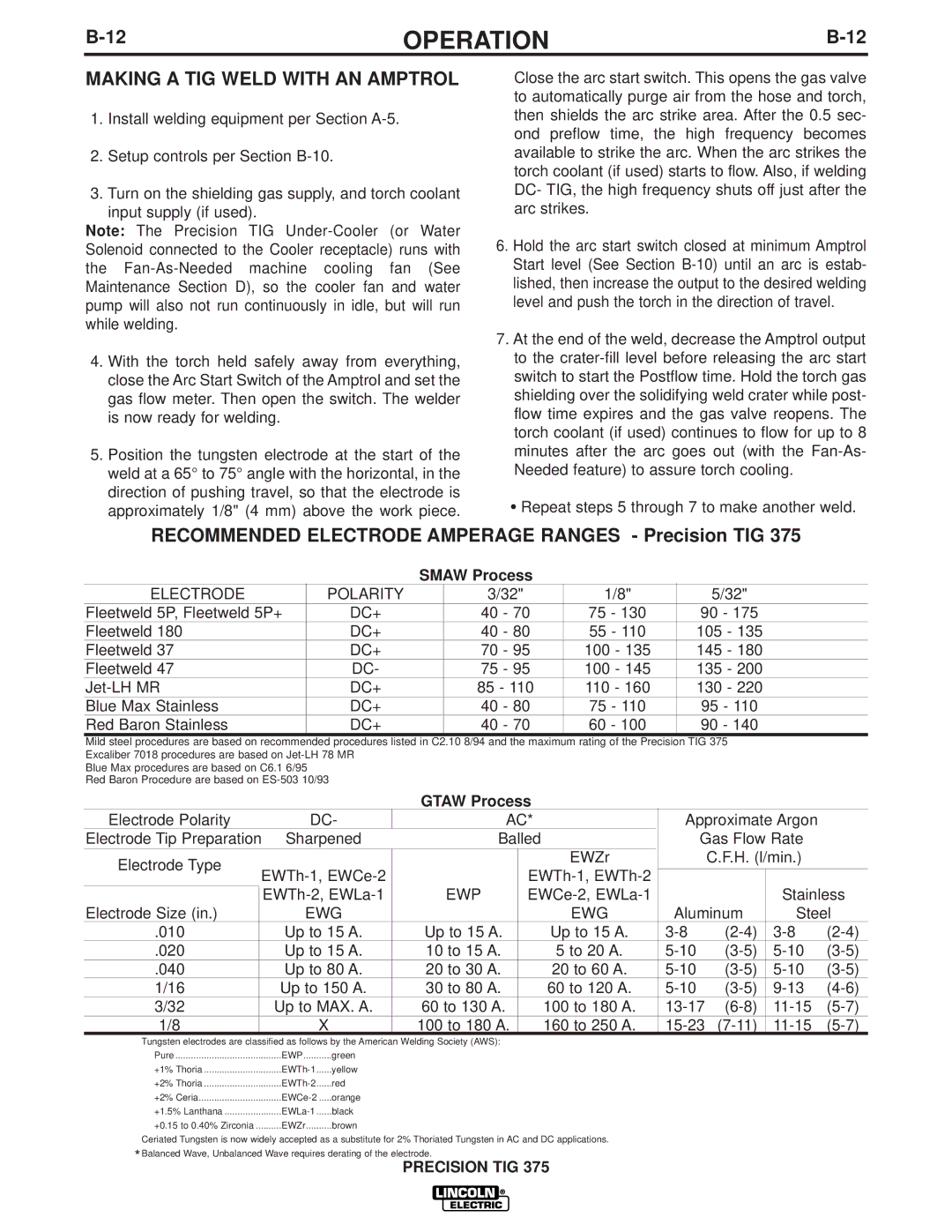IM909 specifications
Lincoln Electric IM909 is an innovative industrial multi-process inverter welder designed to provide exceptional flexibility, performance, and user-friendly operation for a wide range of welding applications. This versatile machine is suitable for both novice and experienced welders, making it an ideal choice for workshops, fabrication shops, and maintenance operations.At the core of the IM909 is its multi-process capability, allowing users to perform MIG, TIG, and stick welding operations. This means that a single machine can cater to various welding needs, from thin sheet metal to heavy structural projects, providing great versatility in welding materials like steel, stainless steel, and aluminum. The IM909 is designed to meet the demands of today’s welding professionals, enabling seamless transitions between different welding processes without sacrificing performance.
One of the standout features of the IM909 is its advanced inverter technology. The inverter design not only makes the welder compact and lightweight but also enhances energy efficiency and improves arc stability. This results in better control over the welding process, leading to higher quality welds with reduced spatter. Additionally, the IM909 boasts a wide output range, allowing it to handle various welding thicknesses effectively.
Another significant characteristic of the IM909 is its user-friendly interface. The machine comes equipped with a digital display that provides clear readouts of current settings, making it easy for users to monitor and adjust parameters on the fly. Moreover, the intuitive controls simplify the setup process, streamlining operations for users of all experience levels.
Safety is always a top priority in welding operations, and the IM909 integrates several protective features, including over-temperature protection and circuit breaker safeguards. These elements ensure the durability of the machine and protect both the welder and the equipment from potential hazards.
In conclusion, the Lincoln Electric IM909 multi-process inverter welder stands out as a reliable, efficient, and adaptable welding solution. Its combination of advanced inverter technology, multi-process capabilities, user-friendly operation, and safety features makes it an excellent investment for any welding professional looking for quality and versatility in their equipment. Whether performing intricate fabrication work or tackling heavy-duty welding tasks, the IM909 delivers exceptional performance across a wide range of applications.
